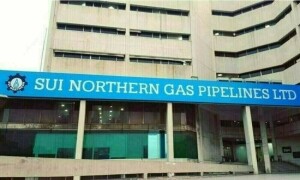SNGPL Challenges OGRA’s ROA Calculation Methodology
ISLAMABAD: Sui Northern Gas Pipeline Limited (SNGPL) has formally contested the Oil and Gas Regulatory Authority’s (OGRA) method for determining Return on Assets (ROA), along with its human resources (HR) benchmarking approach. The challenge also addresses alleged manipulations in financial rates that seemingly advantage Sui Southern Gas Company (SSGC) to the detriment of SNGPL during the fiscal year 2022-23.
The petition, submitted to the Lahore High Court (LHC), contains significant accusations against OGRA, alleging partiality and bias in its Financial Rate of Return (FRR) determination for the fiscal period of 2022-23.
The core of the dispute is OGRA’s verdict to award SSGC a 23.45 percent ROA, while limiting SNGPL to a mere 16.60 percent, a deviation from both current and prior final revenue requirements. This decision sparked considerable volatility in the stock market, raising substantial questions.
ERR determination for FY2025-26: OGRA to evaluate SNGPL plea after conducting detailed review
A prime illustration of this is the extraordinary 600 percent escalation in SSGC’s share value shortly after the regulatory announcement.
Conversely, SNGPL, a parallel entity operating under identical regulatory conditions, experienced no such surge. The stock price of SNGPL remained consistent, displaying typical market behavior. This notable contrast has fueled apprehensions regarding the regulator’s perceived impartiality and the integrity of the decision-making process, prompting SNGPL to challenge the determination.
The regulatory body for oil and gas is also under scrutiny for allegedly skewing the classification of fixed charges. For SSGC, these charges are classified as non-operating income, whereas they are designated as operating income for SNGPL.
This seemingly arbitrary distinction impacts the fiscal well-being of both enterprises, potentially conferring an unjust advantage upon SSGC.
The tenure of Chairman OGRA Masroor Khan was reportedly extended by one year, commencing on February 23, 2025, potentially contravening the OGRA Act, according to media reports. The Cabinet Division issued a notification stating that the government, acting under Section 3 (8) (a) of the OGRA Ordinance 2002, prolonged Masroor Khan’s contractual appointment until February 22, 2026. However, the Act lacks a provision for a one-year extension for the OGRA chairman.
Similarly, Muhammad Arif, formerly a Member (Gas) at OGRA, concluded his term on November 20, 2022. A replacement Member (Gas) has not been appointed, with the additional responsibility assigned to the Member (Oil).
The legal recourse has been initiated in the Lahore High Court invoking Article 199 of the Constitution, alongside Article 25, which assures protection against discrimination. The petition takes issue with OGRA’s methodology for ROA calculation, its HR benchmarking formula, and the purportedly manipulated financial rates that benefit SSGC at the expense of SNGPL.
Moreover, SNGPL contends that OGRA’s HR policies place them at a disadvantage. Despite being significantly larger than SSGC, SNGPL is compelled to function with a comparable workforce size, leading to operational challenges and reduced efficiency.
OGRA has employed a human resource benchmark formula since the fiscal year 2005-06, encompassing four key elements: the Consumer Price Index percentage (CPI), the transmission and distribution network, the count of consumers, and sales volumes.
The petitioner stated that for the fiscal year 2022-23, SSGCL was granted a CPI impact allowance of 50 percent, whereas SNGPL was restricted to 25 percent.
SSGC, possessing a smaller transmission and distribution (T&D) network and fewer consumers, was allocated a greater unit rate compared to SNGPL. Specifically, the unit rate for SNGPL’s T&D network was Rs 117, 594 per km, while SSGCL was allowed Rs 297,068 per km; Rs 2,418 per consumer for SNGPL versus Rs 4,864 for SSGC; and sales volume for SNGPL at Rs 25,202 per mmcf compared to Rs 22,906 for SSGC.
Despite SNGPL’s network being three times larger in terms of kilometers and double the size in terms of consumer base, its HR costs for the specified year were capped at Rs 20,598 million, compared to Rs 19,659 million for SSGCL.



Comments (0)
No comments yet. Be the first to comment!
Leave a Comment